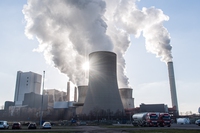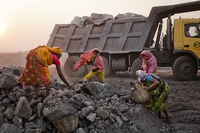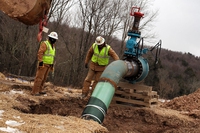
Is the age of coal really over?
Italy’s coal plants are closing down, but coal still powers several European countries and major Asian nations. This delay will weigh heavily on consumers.
Italy’s coal plants are closing down, but coal still powers several European countries and major Asian nations. This delay will weigh heavily on consumers.
Survival International, a global movement for tribal peoples’ rights, has denounced mercury poisoning in Latin America in a letter to the UN Special Rapporteur for Health. The organisation highlights Venezuela, Peru and Brazil as countries that don’t comply with procedures to monitor the effects of mining on the environment. Mercury contamination, which commonly follows illegal
Energy in India: an overview India is a country of over 1 billion people, around 18% of the world population. 60% of Indians live in rural areas and at least 240 million have no access to electricity. It is one of the fastest growing economies in the world, estimated to grow 8% in the next
The history of energy in Brazil: “the oil is ours” Brazil drilled its first oil well in 1897 in Bofete City and in 1953 the oil and gas giant Petrobras was founded under the slogan “o petróleo é nosso” (the oil is ours). Over the years, Brazil diversified its energy matrix. Starting from the 1940s
A history Significant changes in the history of energy in the United States have mainly been dictated by the development of new resources. From the use of wood up to the late 1800s to early industrial growth powered by water mills, coal became the first source of primary energy in the late 19th century. In
One child has already died due to mercury poisoning, which has put the safety of up to 80% of the indigenous Nahua tribe, who live in the Peruvian Amazon, in jeopardy. The circumstances as to why the majority of the community presents symptoms of intoxication caused by the substance remain unclear. Its high levels in
China’s CO2 emissions could peak by 2025, rather than 2030, the limit set by the Chinese government in November. Therefore, within 10 years, China could release in the atmosphere 12.5 to 14 billion tonnes of greenhouse gases, compared with 10.2 billion tonnes registered in 2011 (last figure available). This means that starting from 2025 China’s emissions are
Something is changing in the world’s energy market: shale gas, gas extracted from porous rocks through fracking, plays now the lead role.






